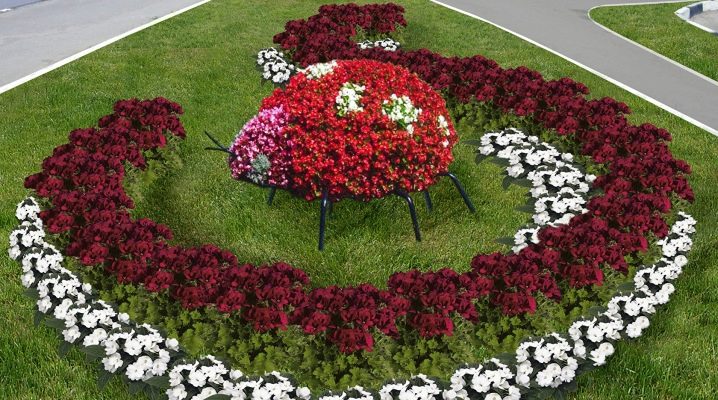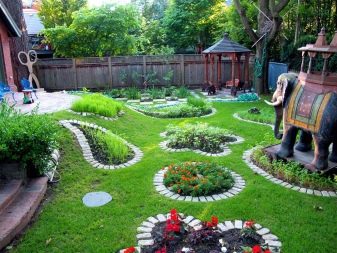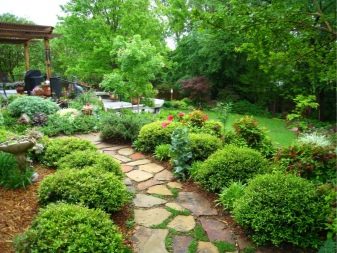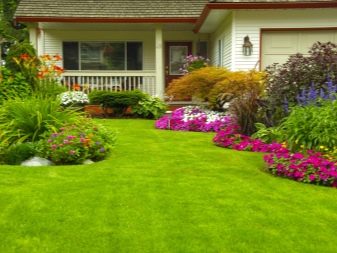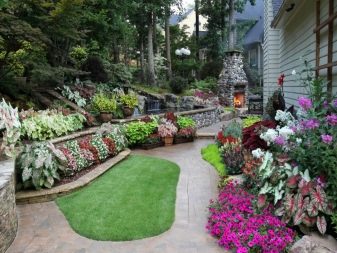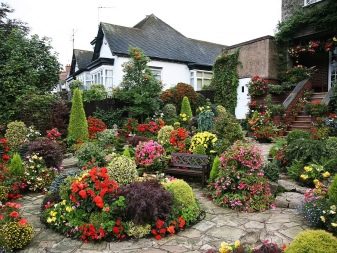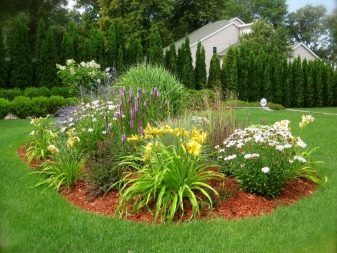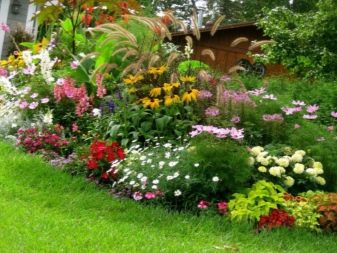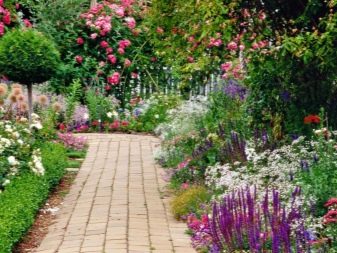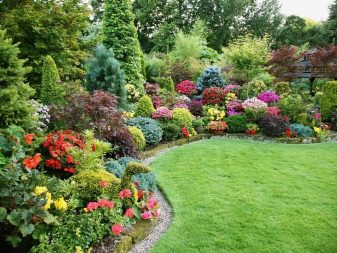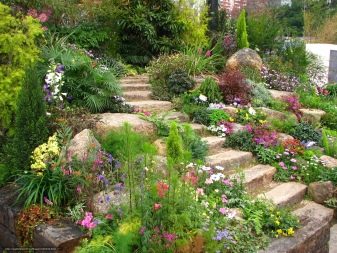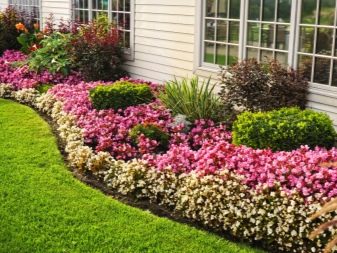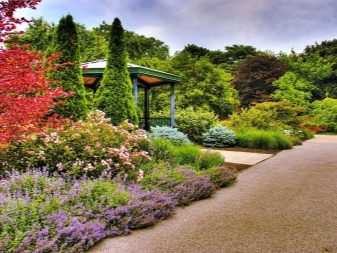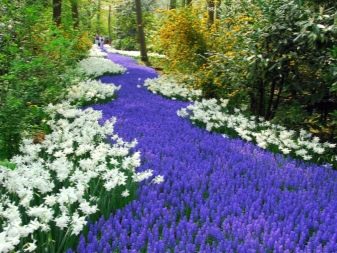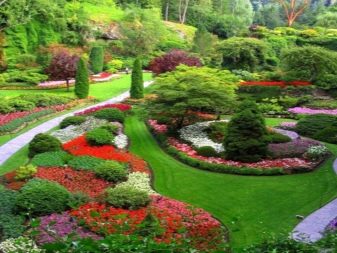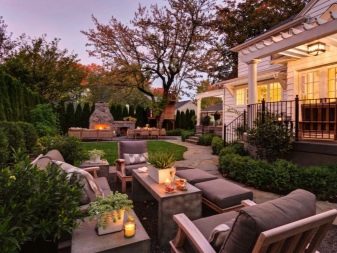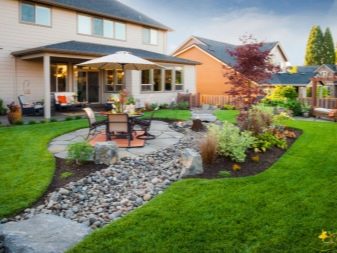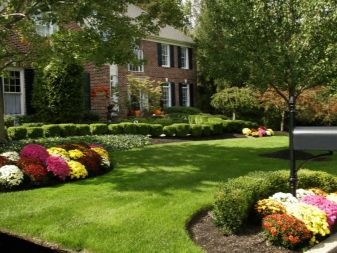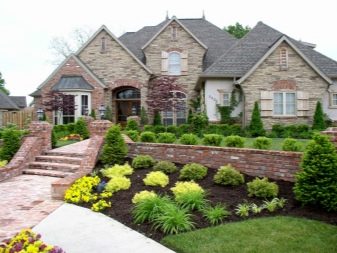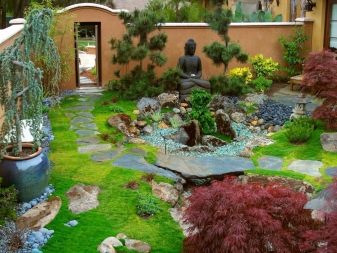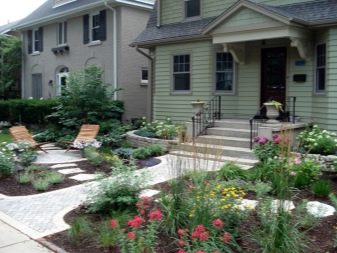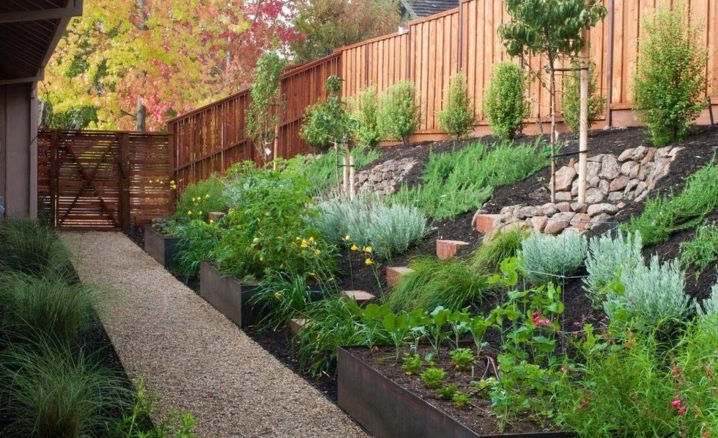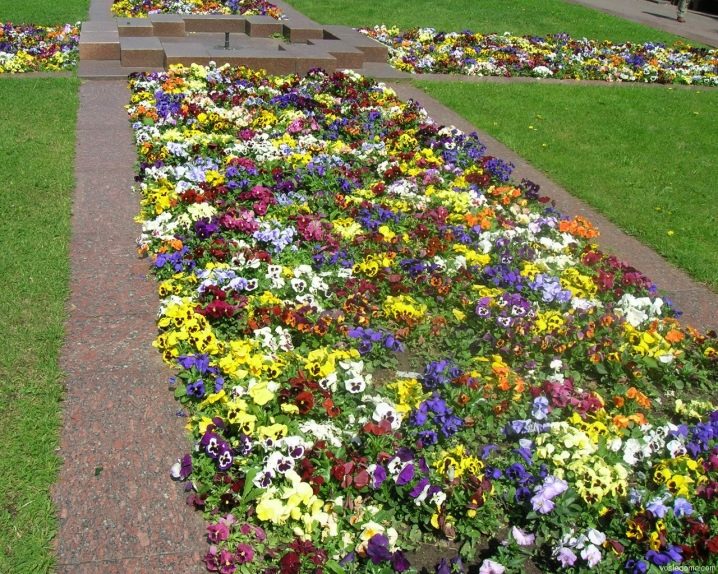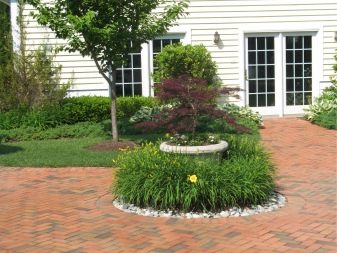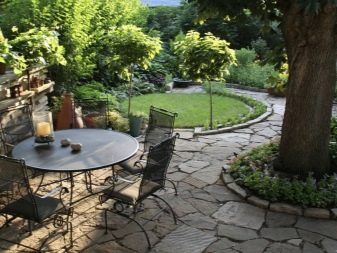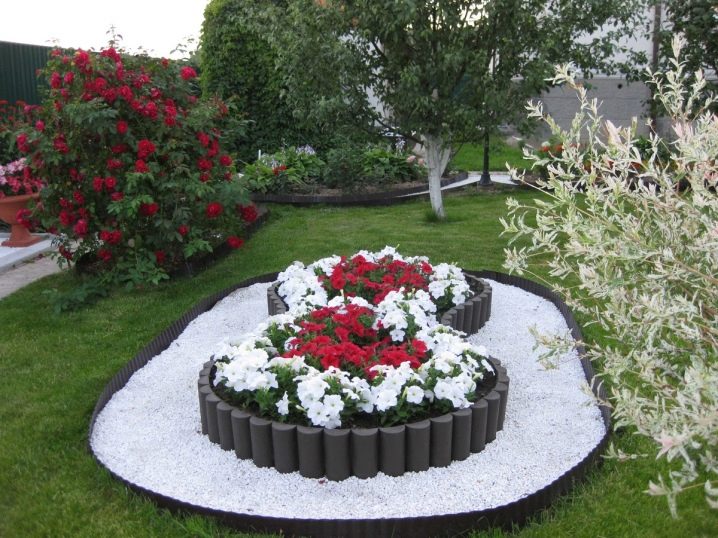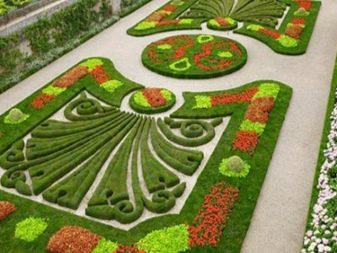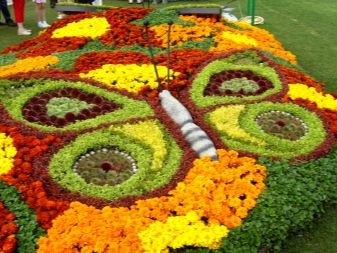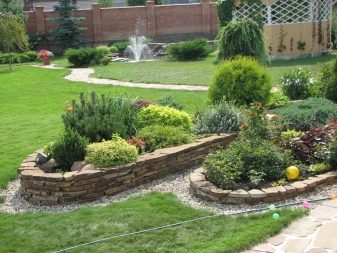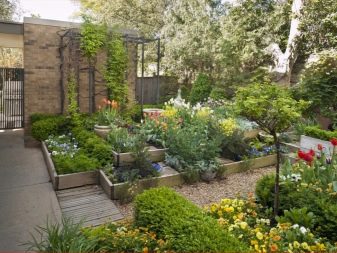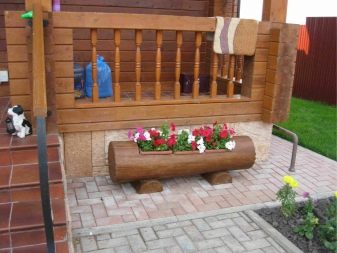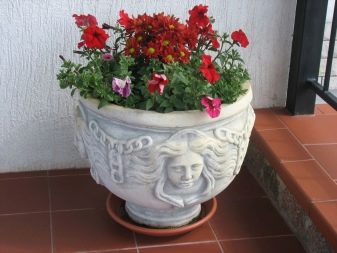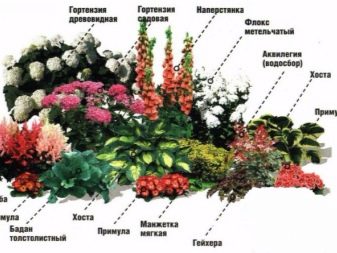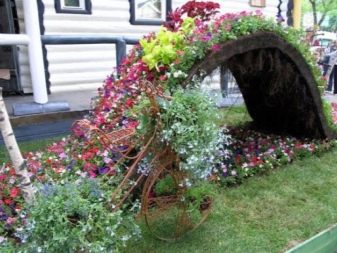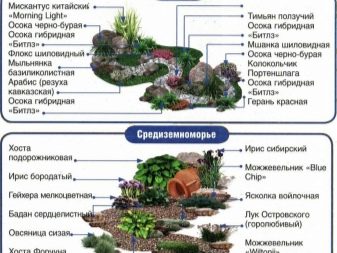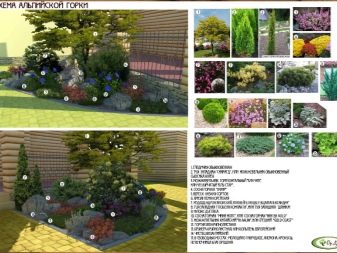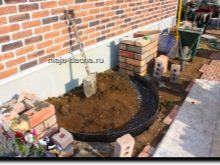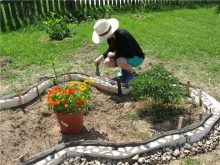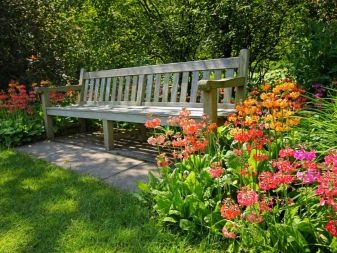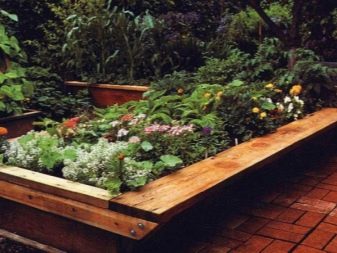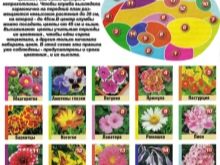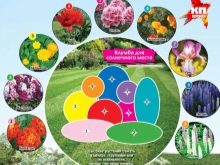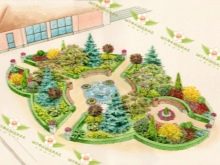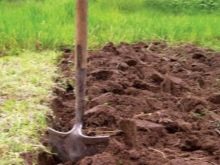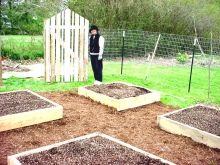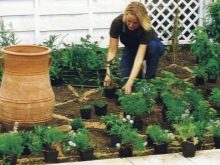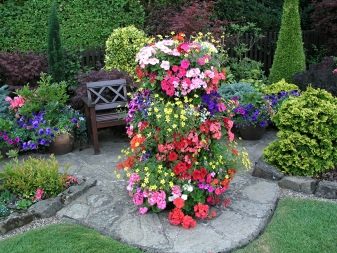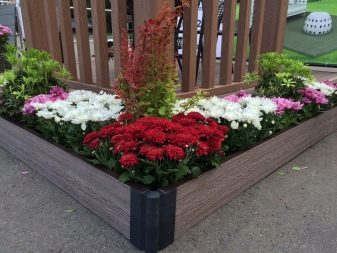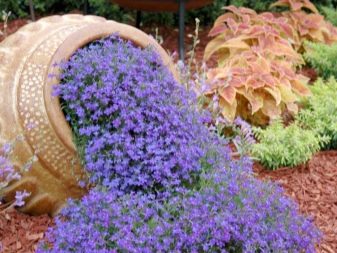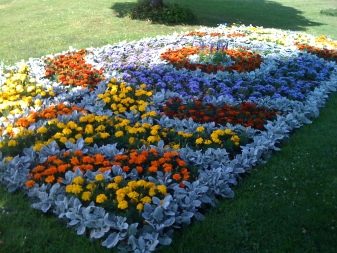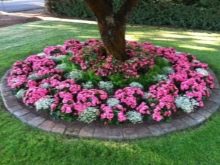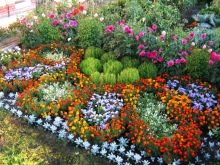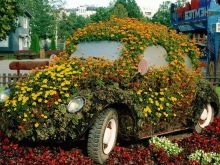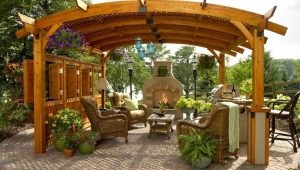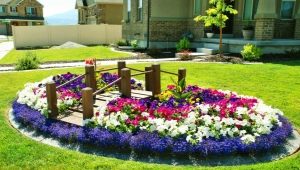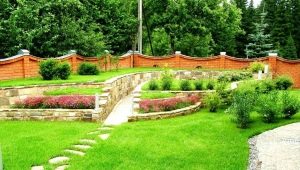Landscape design: how to choose flowers for a bed?
Lucky can be called those who have their own private home or suburban area. Squares are often occupied by potatoes, tomatoes, cucumbers, fruit trees. Each summer resident likes to create different multi-colored flower arrangements. Their beauty pleases the eyes of not only the owners, but also neighbors, and bystanders.
Design features
Skillful gardeners and gardeners, gaining experience and learning from their mistakes, are able to correctly place the flowers and combine their various varieties. Experienced flower growers place flowers so that they bloom in turns throughout the warm season. It is necessary to take into account that the flowers need the sun, therefore they should not overshadow each other. Most often, flower beds are used for ordinary beds, but each gardener, taking into account the peculiarities of his plot, is able to bring something of his own, original, to create beautiful things with his own hands. In the course goes what, it would seem, is not suitable for such purposes.
We can say that the creation of a flower garden can afford everyone. It is necessary to make efforts, and also to show patience and accuracy. Often, all designs in which flowers grow are called flower beds, but there are a large number of designs in which flowers can be grown. The most popular are:
- flower beds. The flower bed should be fenced off from the common site with a small fence or a low border. The shape must be geometrically correct. From 2 to 8 types of flowers are planted in the flowerbed. They can be arranged in a certain order, and absolutely randomly, depending on your idea;
- rabatki. This flower garden is a strip of flowers. The width is usually from 20 cm to 1 m. For this flower bed, 1-2 kinds of flowers of the same height are used. Most often, rabatki do along the paths at the same height;
- border. It is similar to the ridge in structure, with the height should be on the same level with the path or slightly lower. Consists of plants of the same species, most often, a single color. Width - from 10 cm to 0.5 m. Flowers are planted tightly to each other;
- mixborders. They do not have a specific form, they can be planted with completely different plants. They land parallel to the tracks of the house.The only rule that must be observed is: tall flowers are planted farther from the path than low ones. This allows you to make a review of all plants more complete.
Also with the help of a miksborder it is possible to create a certain natural corner from different plants.
- arrays Huge on its territory flower gardens. Often their area can reach 25-30 square meters. For convenience, the arrays are planted with perennial plants, which delight the eye until the late autumn and even before the first snow.
Types of decor
There are a huge number of flower beds, which differ in a variety of parameters. Some are able to decorate the site, not only in the warm season, but year-round. Also, you can often find multi-level flowerbeds, in which a whole palette of colors will be presented, of course, with proper selection of plants:
- Traditional. Plants are planted so that the bed is not empty from April to October, November, or until the snow is lying. For example, in the spring crocuses, tulips, primroses will bloom, then summer and autumn varieties. It is necessary to take into account the height of those plants that grow in this flower garden.In order to better see all the plants in the flowerbed, in the center a mound of earth is made up to 15 cm high. Thanks to this, an ellipsoidal shape is obtained, which creates an excellent overview of the entire surface.
- Regular. The main distinctive features of this type of beds are the underlining of artificial origin and the presence of strict patterns and paintings. Plants are used very different. Most often, it is necessary to look for flowers of contrasting tones, to combine light and dark colors to emphasize the contours of the flower bed or the entire picture. In addition to plants, various herbs can be planted. The drawing is rarely symmetrical, more often there is just a created ornament.
- Irregular. From the name it can be understood that this type of flower beds is the complete opposite of the previous ones. In them, flowers, grass, shrubs and trees are planted completely randomly. The flowerbed is filled so that the plants bloom on it all year round. It would seem that there is complete anarchy and disorder, but this option also creates a beautiful corner.
- Vertical. This option is used to save space. Plants are in the vases on the frame or in the vases on racks.Often this option beds can be used as a living wall of plants. Hanging or twisting types are used.
- Carpet. Hard to create a version that resembles a Persian rug. Low flowers and herbs are used that can make the ground cover completely invisible, leaving no gaps. Two contrasting colors are commonly used. Such "carpets" occupy a large area, having, most often, the correct square shape.
- Circular. Most often, it is organized around trees or boulders, sometimes around buildings or other elevations of relief. Plants are often planted randomly, rarely using one type of flower. This flowerbed does not take up much space, but decorates the site. If under each tree to create such a flower circle, the plot will look very colorful, as if decorated with beads.
- Monoclumba. From the name it is clear that in such a flower garden there will be one type of plants. For them are used such plants that have a high stem and lush color. With skillful selection, two dissimilar species are able to grow here, which bloom at completely different times.For example, you can combine tulips, which bloom in spring, and rose gardens, blooming in summer.
- Arabesque. These flower beds have a very complex shape. Often they try to connect the contours with the theme of nature, making out a flower garden in the form of a leaf, butterfly, bud. Abstract drawings are also popular. Mandatory pronounced edges. Often, for such flower beds, skeletons are created; soil is poured in them along with nutrients for a certain type of plant.
- Elevated. This flower garden is gaining popularity in recent times, but it is extremely difficult to manufacture. The first step is to create boards of sufficient height out of stones. Powerful stone walls are obtained. Then the form is filled with drainage, soil and mineral components. The work done is quite complicated, but the result will please you. Plants in such a flower garden will be protected from small animals that can trample the soil or search the ground.
Absolutely any plants can be planted in it, only in advance it is necessary to enrich the earth with fertilizers specifically for the selected varieties.
- Flower bed-waza. An excellent solution would be to arrange a flower garden in any capacity.For this, you can use both purchased vases and what you replace them with. Convenience is that such a vase can be moved to any place. In winter, you can either bring it into the house or hide it in the garage or shed. This method is simple, because caring for plants is a snap. It is also easy to replace the soil in this flower garden.
Plant types and planting patterns
Landscaping is one of the components of comfort throughout the site. Flowerbeds and flower beds of various shapes and sizes can create a bright atmosphere around. It is important not only to choose the size and type of flower garden, but also to make the correct selection of all plants. Often, designers are advised to choose plants for flower beds based on where this flower bed is located.
Any room or plot begins at the entrance, so setting a flower bed right at the entrance to the courtyard is an original solution that will show guests your hospitality. Also, this flowerbed will constantly please the owners.
Roses, petunias, lilies, coniferous thuja, balsamines and sage are perfect for placing at the entrance. You can supplement the entrance group with conifers. It is also advised to observe a certain proportion of the number of plants depending on their height: for example, 2 plants in height from 80 cm to 1 m, 5 plants in average height and 10 low plants.You can select a plot under 15 dwarf plants.
When creating a flower bed on the site, you need to dig up a flower bed, removing all the turf from above. Grooves for plants are poured with fertilizer land for planting. Most often, perennials are selected: fostrium, perennial aster, coreopsis, silverweed. The choice falls on them because they are unpretentious in the care. When creating a flower garden on the place where there are a lot of sunshine for a long time, you need to choose bright plants: hibiscus, candy bars, petunias, geleniums, junipers.
Landing takes place either immediately after sunrise, or before sunset. In the heat to perform work is strictly prohibited.
When choosing plants that will be planted near benches or benches, it is best to give preference to mountain grass, ferns, lemon verbena, and hyacinths. If you plant thuja, chamomile, sage, then next to such a flowerbed will constantly be butterflies circling. This flower garden will create a fabulous comfort, while you sit and watch the beauty. In summer, a gazebo is a favorite place for family gatherings or relaxing with friends, and a flower garden will decorate this place. It is best to choose four or six types of plants: Sedoub, sage, geyser, goldenrod, millet, coreopsis, clematis. You can divide a flower bed into several parts using sand, sawdust or chalk and plant different plants to create a spectacular picture.
You can also think about creating an autumn flower garden. In autumn, any flowering plant warms the soul and pleases the eye. For such purposes, suitable aster, viburnum, red maple or oregano.
Useful tips
Before you decide to decorate your plot with plants, you need to make a landscape design of the plot:
- mark, respecting the scale, the exact boundaries of the site;
- continuing to respect the scale, identify all available buildings;
- consider and draw the objects you plan to build in the next few years;
- if the site is too large, it is necessary to correctly divide it into separate areas so that it is easier to transfer the plan to the area;
- draw on the plan all communications;
- put on the plan all the already existing plants.
Only after carrying out these works it is necessary to think where to make additional beds. It is necessary to remember about the lawn, which, most often, is the background for the flower bed.The lawn must be completely flat, otherwise the picture will be incomplete and ugly. If you are a beginner, it is best to choose ready-made lawns, experienced gardeners know how to plant and care for the lawn:
- lawn type to choose from the fall. It is necessary to examine the landscape, think over drainage;
- seeds are planted in early spring. Lawn grass seeds are very small. In order to evenly sow all the grass, it is necessary to mix the material with coarse sand.
With irregular watering the grass will begin to turn yellow, and in the future it will lose the entire aesthetic appearance.
Beautiful examples
Often the land owners are unhappy with the size of their possessions. Proper location and design of plants will help correct this situation:
- relief changes are achieved with the help of high beds, hanging pots or huge flowerpots;
- it is necessary to use night lighting near those places where the most beautiful flowers or landscape elements are located;
- Also help "whists" - design optical illusions created by plants.
Flowerbeds and other types of flower gardens - a mandatory element of any site, both in the city and in the rural settlement.Flowers are able to decorate any landscape, and their correct location will allow them to please the eye as long as possible.
Further we offer to look at some interesting landscape tricks.
